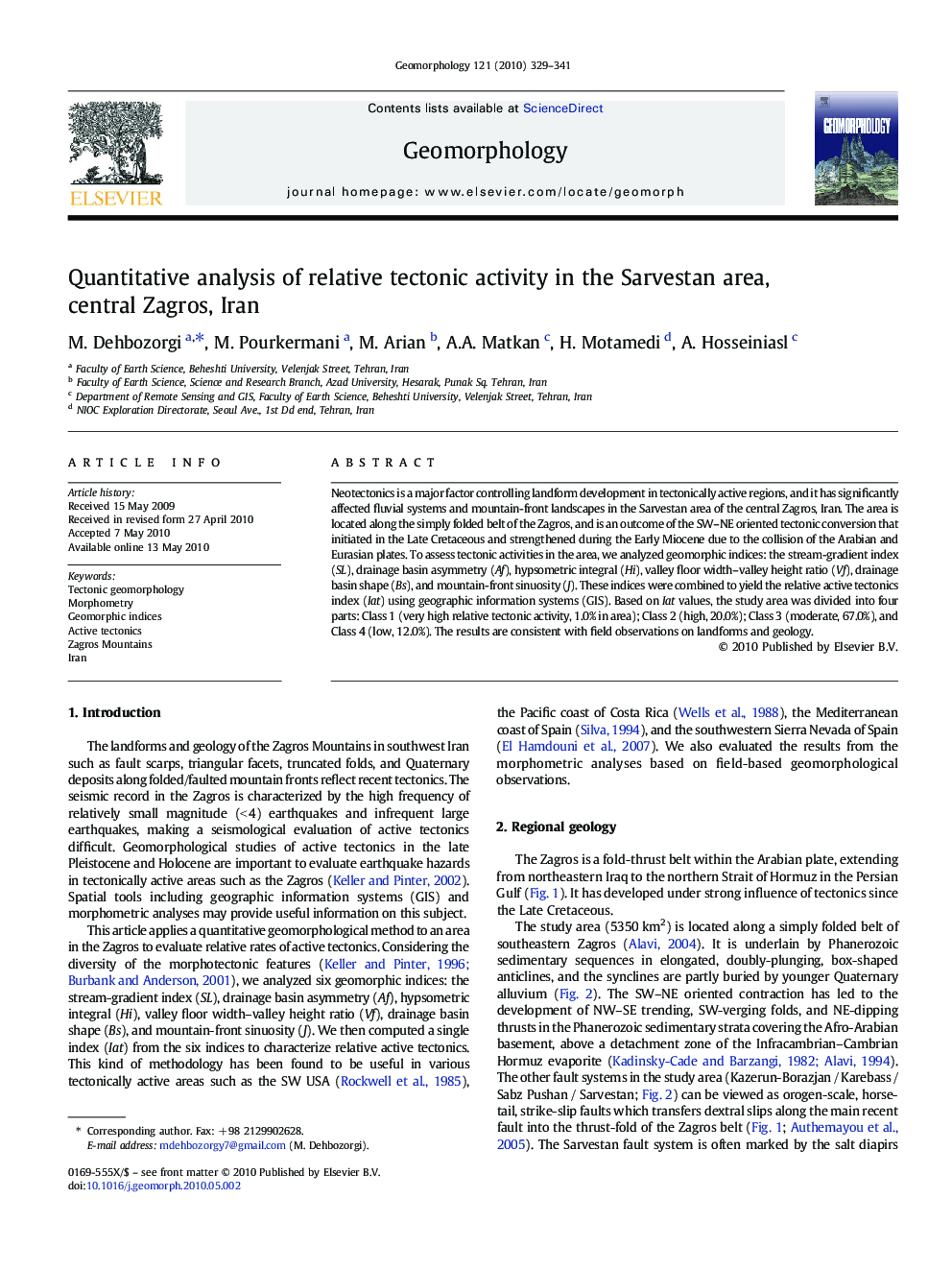| Article ID | Journal | Published Year | Pages | File Type |
|---|---|---|---|---|
| 4685783 | Geomorphology | 2010 | 13 Pages |
Neotectonics is a major factor controlling landform development in tectonically active regions, and it has significantly affected fluvial systems and mountain-front landscapes in the Sarvestan area of the central Zagros, Iran. The area is located along the simply folded belt of the Zagros, and is an outcome of the SW–NE oriented tectonic conversion that initiated in the Late Cretaceous and strengthened during the Early Miocene due to the collision of the Arabian and Eurasian plates. To assess tectonic activities in the area, we analyzed geomorphic indices: the stream-gradient index (SL), drainage basin asymmetry (Af), hypsometric integral (Hi), valley floor width–valley height ratio (Vf), drainage basin shape (Bs), and mountain-front sinuosity (J). These indices were combined to yield the relative active tectonics index (Iat) using geographic information systems (GIS). Based on Iat values, the study area was divided into four parts: Class 1 (very high relative tectonic activity, 1.0% in area); Class 2 (high, 20.0%); Class 3 (moderate, 67.0%), and Class 4 (low, 12.0%). The results are consistent with field observations on landforms and geology.
